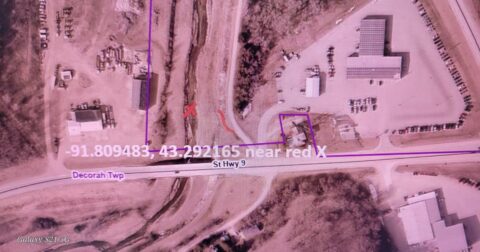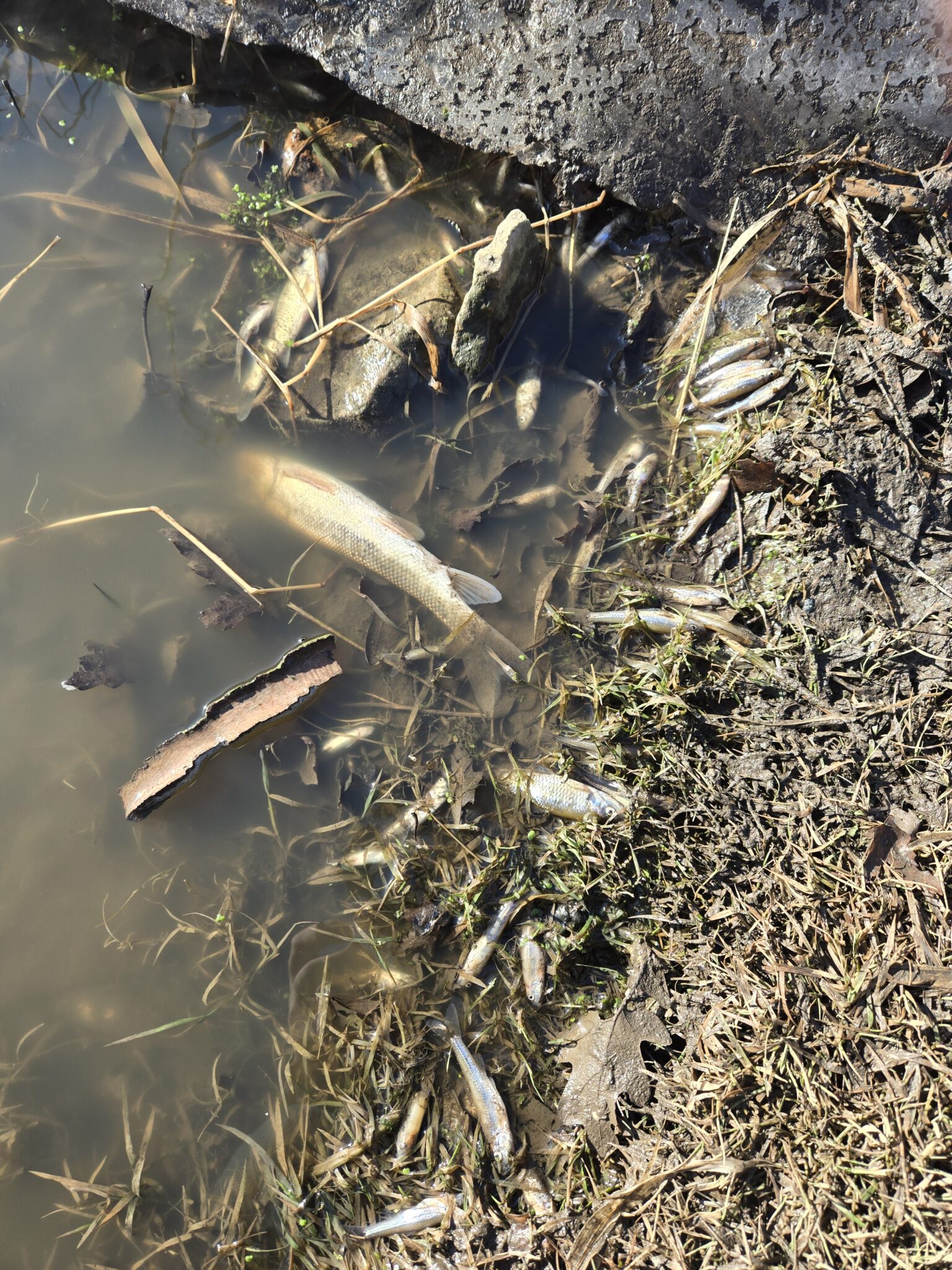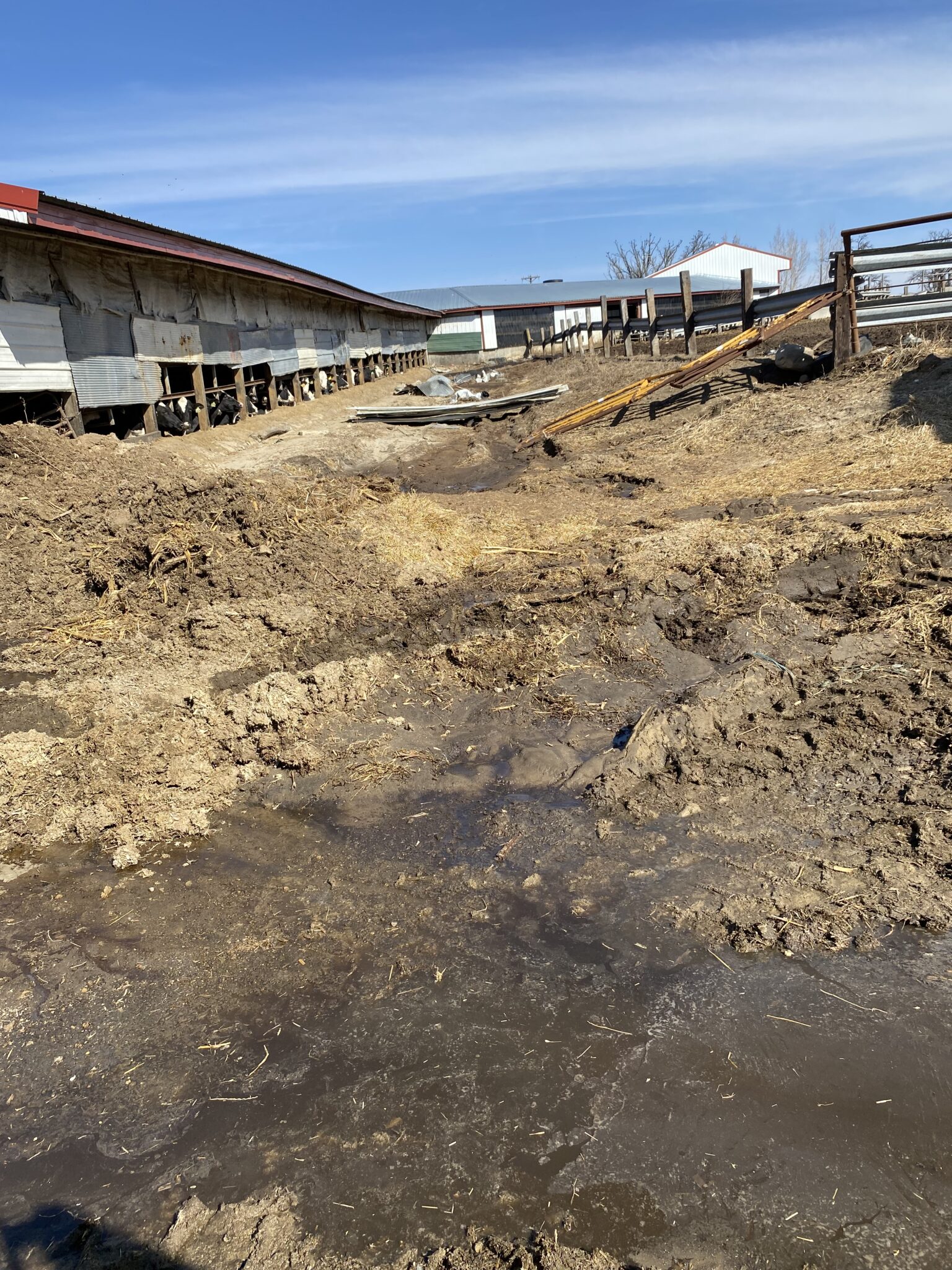Feature
Heat Exhaustion, Amputated Fingers, Crushed Limbs: The Hidden Cost of American Turkey
Food•8 min read
Investigation
State records reveal a faulty manure control structure noted in previous inspections, and “freshly dead fish with some stranded gasping for air, manure on top of ice, and dirty flowing water below ice…”


Words by Nina B. Elkadi
On March 10, the Iowa Department of Natural Resources received two phone calls. One caller phoned to complain that manure runoff was entering a tributary of Dry Run Creek, a waterway that provides vital habitat for fish and other wildlife in Winneshiek County, Iowa. The other caller described dead fish downstream. A few days later on March 13, the DNR reported the manure spill but did not name its source. Sentient has now obtained records from the Iowa DNR that show the source is an Iowa dairy operation — the Dale Humpal Dairy — located near an animal feeding operation run by another individual — Darryl Humpal — whose own operation has been fined multiple times for manure spill violations. Both operations have each received approximately $2 million in federal subsidies.
This particular manure spill caused a 10.2 mile-long fish-kill — one of the largest documented kills to occur in Iowa in the last decade.
In the Department’s field report, DNR officials observed “several dead fish” and “a strong odor of manure.” The report continues, “fish appeared to have recently died and they had not deteriorated yet.” In a letter to a DNR district supervisor, a natural resource technician describes, “freshly dead fish with some stranded gasping for air, manure on top of ice, and dirty flowing water below ice…”
More than 100,000 dead fish were observed by the investigators, whose subsequent water tests revealed lethal levels of ammonia. According to an evaluation of Dale Humpal Dairy’s manure storage facility on March 12, a faulty manure control structure had been “noted during previous inspections.”
Lactating dairy cows produce 150 pounds of manure per day. Dairy operations produce a lot of manure — more than poultry farms or beef — and that manure can wreak havoc on the environment in a number of ways. In addition to water pollution, livestock manure management is responsible for around 9 percent of methane emissions in the U.S., according to the Environmental Protection Agency.
As part of its investigation, on March 11 DNR officials paid a visit to Dale Humpal Dairy, where the manure appeared to be originating. Dale Humpal, the apparent operator who is listed as a member of the Iowa State Dairy Association Board, was nowhere to be found that day.

According to DNR documentation, Dale Humpal Dairy is a 330-head dairy with 50-60 heifers, and 15 calves “in huts,” the small structures where individual calves are typically kept on industrial dairy operations. The documents refer to the dairy as an animal feeding operation, which the EPA defines as an agricultural operation where animals are raised in confinement. In one of the photos Sentient obtained, cows can be seen crammed in a large shed with just enough room at the bottom to poke their heads out for air.
On March 12, the DNR was able to make contact with Humpal, who told the DNR he was not aware of any manure overflowing from his operation. As the DNR official continued to test for ammonia downstream (with some samples testing as high as 23 parts per million), they ultimately came to their conclusion that the dairy was the source, and on March 31 called Humpal with the results.
“I stated to him that my investigation was concluded and it was determined that the runoff from his open lots caused manure to flow into the tile intake,” the official wrote, referring to the soil drainage system prevalent in Iowa farmland.

In 2017, a manure spill attributed to the animal feeding operation owned by Darryl Humpal — located near Dale Humpal Dairy — killed 34,486 fish in Dry Run Creek.
Water pollution continues to afflict Iowa amid a steady increase of farm animals in the state. The overwhelming majority — 99 percent — of farmed animals in the U.S. are raised in factory farms. In Iowa, there are almost 124 million farm animals at any given time — around 55 million chickens, 53.4 million hogs, 11.5 million turkeys, and 3.7 million cattle and cows. In Iowa, manure spills are commonplace: a recent report by Food and Water Watch found that from 2013 to 2023, there were 179 documented manure spills that killed almost 2 million fish.
Dale Humpal did not immediately respond to a request for comment. The Iowa Department of Natural Resources did not respond regarding what penalties it will be pursuing as a result of the violations.
Clarification: This piece has been updated to attribute one line from an official report.